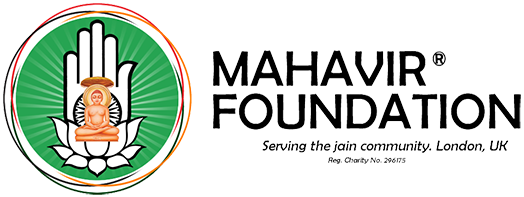Dravya Puja
Deva puja means worship of tirthankaras. It is usually done in front of images of any liberated soul (Siddha) such as Tirthankara, or Arihant. In Jainism, the Tirthankaras represent the true goal of all human beings. Their qualities are worshipped by the Jains. … Jain form of worship is also called Jain Puja.
Bhava Puja
Bhava puja(means Psychic worship) is done by ritual called Chaitya Vandana. It includes number of prayers and rituals done in prescribed manner and positions.
Generally Jains use the following eight items to perform puja of a Tirthankara in the temple. Symbolically each item represents a specific religious virtue and one should reflect on it while performing puja.
- Jala Puja: Water
- Chandan Puja: Sandal-wood
- Pushpa Puja: Flower
- Dhup Puja: Incense
- Dipak Puja: Candle
- Akshat Puja: Rice
- Naivedya Puja: Sweet food
- Fal Puja: Fruit
- Jala Puja: (Water)
Water symbolises the ocean. Every living being continuously travels through life’s ocean of birth, death, and misery. This puja reminds that one should live his life with honesty, truthfulness, love, and compassion towards all living beings. This way one will be able to cross life’s ocean and attain liberation (Moksha). This is known as samyak-darshana, samyak-jnana, and samyak-charitrya in the Jain religion.
- Chandan Puja: (Sandal-wood)
Chandan symbolises knowledge (jnana). By doing this puja, one should thrive for right knowledge. Jainism believes that the path of knowledge is the main path to attain Moksha or liberation.Bhakti or devotion helps in the early stages of one’s effort for liberation.
- Pushpa Puja: (Flower)
The flower symbolises conduct.Our conduct should be like a flower, which provides fragrance and beauty to all living beings without discrimination. We should live our life like flowers full of love and compassion towards all living beings.
- Dhup Puja: (Incense)
Dhup symbolises monk-hood life. While burning itself, incense provides fragrance to others. Similarly, true monks and nuns spend their entire life selflessly for the benefit of all living beings. This puja reminds that one should thrive for a ascetic life.
- Dipak Puja: (Candle)
The flame of dipak represents a pure consciousness, i.e. a soul without any bondage of a karma or a liberated soul. In Jainism, such a soul is called a Siddha or God. The ultimate goal of every living being is to become liberated. By doing this puja one should thrive to follow five great vows; non-violence, truthfulness, non-stealing, chastity, and non-possession. Ultimately these vows will lead to liberation.
- Akshat Puja: (Rice)
Rice is a kind of grain which is non-fertile. One cannot grow rice plants by seeding rice. Symbolically, it means that rice is the last birth. By doing this puja one should thrive to put all the efforts in life in such a way that this life becomes one’s last life, and after the end of his life one will not be reborn again.
- Naivedya Puja: (Sweet food)
Naivedya symbolises tasty food. By doing this puja, one should thrive to reduce or eliminate attachment to tasty food. Healthy food is essential for survival, however one should not live for tasty food. Ultimate aim in one’s life is to attain a life where no food is essential for survival. That is the life of a liberated soul who lives in Moksha for ever in ultimate blissful state.
- Fal Puja: (Fruit)
It is a symbol of Moksha or liberation. If we live our life without any attachment to worldly affairs, continue to perform our duty without any expectation and reward, be a witness to all the incidents that occur surrounding us, truly follow monk-hood life, and have a love and compassion to all living beings, we will attain the fruit of liberation. This is the last puja symbolising the ultimate achievement of our life.
Divine Asta Prakari Pooaja is Path for to attain the highest form of enlightenment.
Asta Prakari Puja is mainly devoted to Shri Adinath Bhagwan.


